10 great things in Paris most visitors (and some locals) miss
By Divya Bala
If you’ve already had an eyeful of the Eiffel and seen enough of the Seine, there are a few hidden gems in the City of Lights that some of the locals don’t even know about. Discover the discreet side of Parisian chic.
La Grande Mosquée de Paris
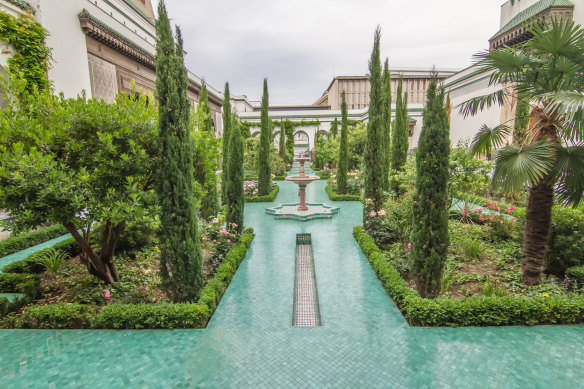
The mosque’s internal courtyard is an oasis of serenity.Credit: iStock
The courtyard of the mosque is a welcoming and tranquil oasis filled with lush greenery, in a blend of Moorish and Byzantine architecture that includes a striking minaret, ornate fountains and intricate tilework. Should you decide to visit the on-site hammam spa, or simply wish to take a peaceful retreat from the honking horns of the streets, you can take a cup of traditional mint tea and North African pastries in tranquil surrounds. The unique architecture and beautifully kept gardens make for an ideal wind-down, whether seeking spiritual solace or a moment of solitude. See grandemosqueedeparis.fr
Stohrer
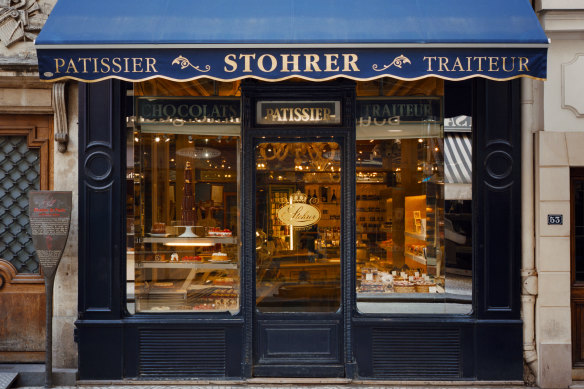
It is thought the original Rhum Baba was created at Nicolas Stohrer.
Founded in 1730 by King Louis XV’s pastry chef, Nicolas Stohrer, the oldest bakery in Paris is famous for its delicious and aesthetically crafted pastries. It is rumoured that the French classic, Baba au Rhum, was created here – a rum-soaked sponge cake topped with whipped cream – and you can find croissants, macarons and eclairs in an interior that exudes old-world elegance with antique display cases and original tilework, (indeed, you could be forgiven for walking past the humble exterior). In recent times, Stohrer has been celebrated for innovative twists on traditional pastries, including the Eclair Revolution, featuring unique flavour fusions and colourful designs. If you need to rest your legs, there’s a sit-down tearoom from which you can take in nearly three centuries of French pastry-making finesse. See stohrer.fr
Musée de la Vie Romantique
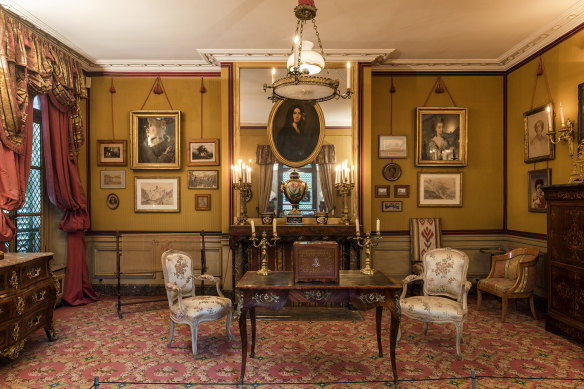
The Montmartre museum houses the works of George Sand and Eugene Delacroix.
Behind an unassuming facade in the foothills of Montmartre, the Musée de la Vie Romantique (Museum of Romantic Life or Museum of the Romantics) is an exquisite museum and secret garden space that celebrates life in the Romantic era of the 19th century. Here, you can see works by artists such as George Sand and Eugene Delacroix, as well as various objects and furnishings that offer an insight into the daily lives of the era’s artists and intellectuals, many of whom lived nearby in this historic neighbourhood. During the summer months, the museum hosts a series of candlelight concerts in its picturesque garden courtyard, well worth booking ahead. See museevieromantique.paris.fr/fr
Coulée Verte
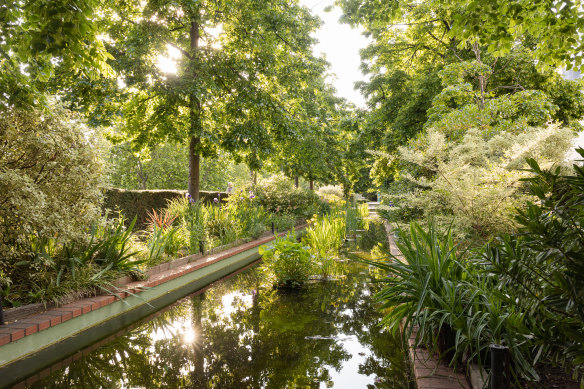
Rent a kayak or go for a stroll along the Coulée Verte (the green alley).Credit: Jean-baptiste Gurliat
Also known as the Promenade Plantée (the Planted Promenade), the Coulée Verte (the green alley) is a unique park in Paris that stretches almost five kilometres from the Place de la Bastille to the Bois de Vincennes (the Vincennes woods) where you can rent a kayak on Lake Daumesnil. Built upon a converted railway viaduct, the Coulée Verte, which inspired New York City’s Highline, is an elevated walkway lined with trees, shrubs, vegetables and flowering plants. Along the way, the walkway is punctuated with sculptures, fountains and places to sit, as well as quiet spots for picnics and viewpoints to take in the beauty of the city. See paris.fr
20th arrondissement
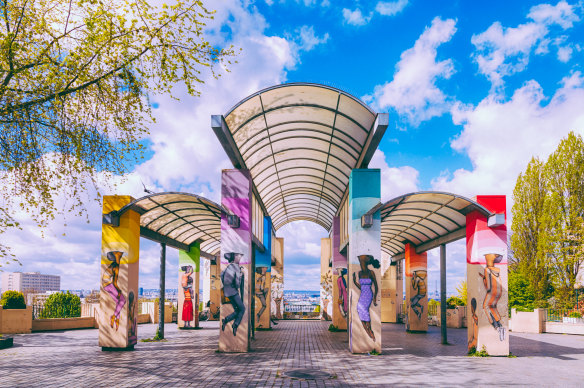
Wall mural paintings at Parc de Belleville by famous French street artist Seth Globepainter.Credit: iStock
Seldom visited by tourists, Paris’s newest arrondissement, formerly farmlands, is known to locals for its vibrant street art scene, lively bars, cafes and cosy, village-like atmosphere. From the artisan-lined Rue Saint Blaise to the charming Place de la Réunion and Menilmontant’s bustling bar scene, it’s a beautiful spot to explore some of Paris’s lesser-known corners. Insider tip: have brunch at Moncoeur Belleville then wander across the road for one of the most expansive views of Paris, and the Eiffel Tower from an angle you’ve never seen before.
Arènes de Lutèce
Tucked away behind residential buildings in the historic 5th arrondissement of Paris, the Arènes de Lutèce is an ancient Roman amphitheatre built in the 1st century AD. Seating up to 15,000 spectators who would come to watch gladiatorial contests before the fall of the Roman Empire, the arena was abandoned and eventually buried under the city. It was rediscovered in the 19th century, restored and reopened to the public as a park. Here, young locals come to play, picnic and reflect on what life might have been like in Paris in Roman times. See parisinfo.com
Passage des Panoramas
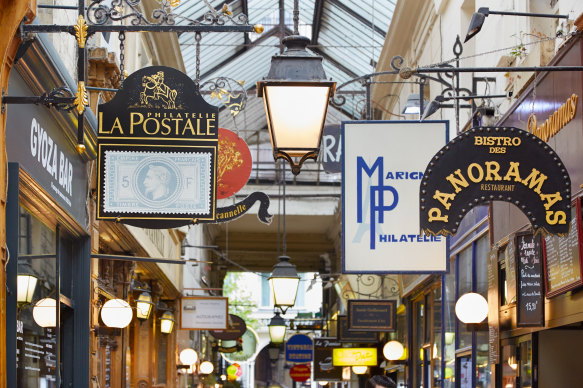
At more than 200 years old, this Parisian passage still draws a chic crowd.Credit: iStock
One of the oldest covered passages in Paris, dating back to 1799, the passage takes its name from the panoramic views that were once available from its upper floors. It has retained all of its 19th-century charm, elegance and decor including a tasteful glass roof that floods the passage with natural light, illuminating the boutique stores and restaurants below. The walls and floors are lined with ornate tilework and intricate mosaics, and many of the shops and stalls within the passage are decorated with original antique furnishings. Of particular note, the miniscule and much-loved Italian restaurant, Racines, a favourite of fashion insiders. Be sure to book ahead. See racinesparis.com/en
Buttes aux Cailles
A charming neighbourhood hidden away from the beaten track in the 13th arrondissement of Paris that embodies a mix of traditional French and Bohemian influences, the area was originally a working-class district that has now evolved its narrow streets into a low-key yet trendy area. Quaint cafes, artisanal shops and vibrant street art line the streets and there’s a lively nightlife scene. Start around Square Henri Rousselle and let the Rue Buttes aux Cailles lead you through the neighbourhood. If you’re around on weekends, plan to check out one of the famous neighbourhood vide-greniers, or, garage sales. See parisinfo.com
Musée de la Chasse et de la Nature
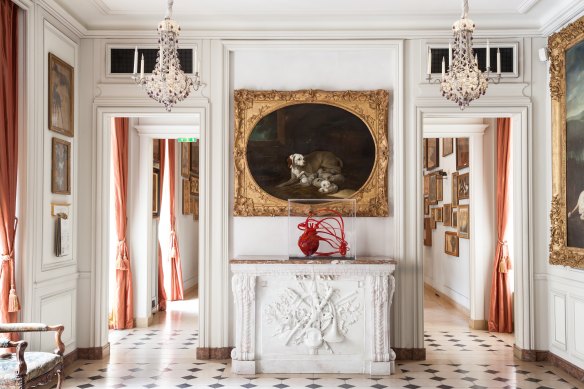
The Museum of Hunting and Nature: an intriguing collection housed in a 17th-century Marais mansion.
The Museum of Hunting and Nature is a whimsical, yet intriguing, collection dedicated to the art and culture of hunting and the natural world. Founded in 1964, the museum is housed in the historic Hotel de Guenegaud, hidden behind high walls in Paris’s fashionable Marais district. Though hunting and the outdoors are not necessarily subjects for all, the museum presents a thought-provoking exploration of our relationship with the natural world alongside carefully curated and thoughtfully arranged objects, furniture and art from celebrated artists such as Jean-Baptise Oudry and Francois Desportes – paintings, sculptures, and taxidermy – in a stunning 17th-century mansion. See chassenature.org
Le Jardin du Musée Albert-Kahn
Created by the banker and philanthropist Albert Kahn in the early 20th century, the space attached to a museum covers four hectares featuring three gardens in English, Japanese and French styles. With more than 10,000 species of plant life represented throughout as well as shimmering koi ponds, pools and tranquil waterfalls as well as rocky hills and towering trees, the garden also features a pavilion, a cottage and a greenhouse in which to take a break from the bustle of the city. See albert-kahn.hauts-de-seine.fr/en
Sign up for the Traveller Deals newsletter
Get exclusive travel deals delivered straight to your inbox. Sign up now.